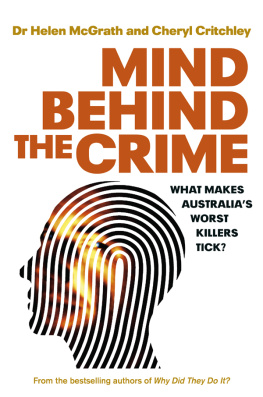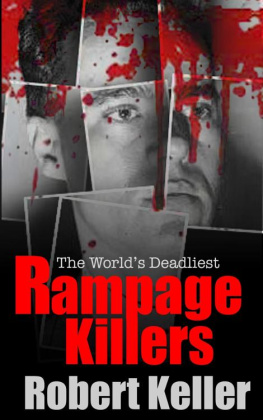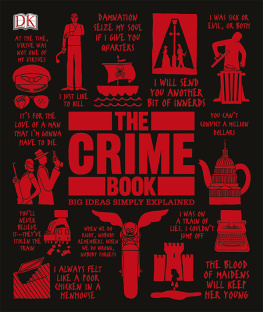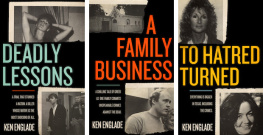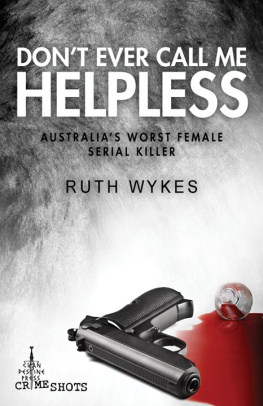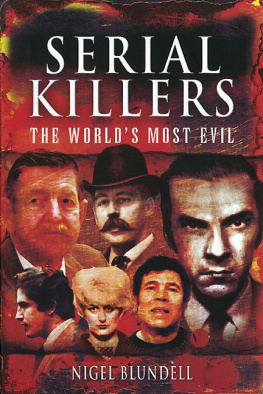About Mind Behind the Crime
Nurses and neighbours, partners and parents all murderers who shocked Australia with the severity of their crimes. But what makes them tick?
Society couple Michael ONeill and Stuart Rattle had it all their lavish country property, their interior design business until Michael bludgeoned Stuart to death with a cooking pan. Akon Guode intentionally drove into a lake, leaving three of her children trapped in the car to drown. Geoff Hunt, pillar of the local community, shot dead his wife and their three children before killing himself. From feuds on the farm to the infamous Lindt Chocolate Caf Siege in Sydney, Mind Behind the Crime profiles Australias most horrific, and often most unlikely, killers.
Renowned psychologist Dr Helen McGrath and prolific journalist Cheryl Critchley, authors of the bestselling Why Did They Do It?, join forces again to unpack the crimes and discover the personality disorders of the perpetrators. They use psychoanalysis and scientific methodology to uncover the circumstances and motives of our countrys most notorious murderers, and to really understand the mind behind the crime.

CONTENTS
This book is dedicated to those who lost their lives, and the family members and friends who loved and supported them, as well as the dedicated police and other legal professionals who worked tirelessly in seeking justice for all of those affected by the crimes covered in this book.
HOW TO USE THIS BOOK
I n our first book, Why Did They Do It?, we attempted to explain the motives behind some of Australias most puzzling murders, to help people to understand why they happened. As well as outlining the circumstances of each crime, we explained how, in each case, a specific type of personality disorder, combined with other factors, led to the murder. In this second volume, we have dissected and analysed new cases and explored several additional personality disorders that had an impact on the perpetrators behaviour and decision-making in the lead-up to their murder or manslaughter. Where appropriate, an outline of the relevant personality disorder is provided as an introduction to many of the specific crimes that are discussed and analysed. Some of the cases, such as those that involve filicide or familicide (the killing of ones family members), dont necessarily involve personality disorders, and the relevant motivational factors are explained by reference to other key psychological research studies. At the back of the book you will find a glossary of technical terms, some useful contact details for those seeking assistance, references and further/recommended reading.
INTRODUCTION
W hy Did They Do It? attempted to explain the inexplicable crimes that shocked Australia and were perpetrated in some cases by the most unlikely killers. Among others they included Robert Farquharson, the seemingly unassuming Winchelsea father who intentionally drove his three young sons into a dam and left them to drown; Melbourne retiree Peter Caruso, who bludgeoned to death Rosa, his wife of almost 50 years, and tried to blame burglars when police arrived; and Gerard Baden-Clay, a cocky Queensland real estate agent who murdered his wife Allison, left her on the banks of a creek and maintained his innocence as friends and family tried desperately to find her.
We explained how each of these killers was largely driven by their specific personality disorders. In Farquharsons case it was avoidant personality disorder (AvPD), while Caruso and Baden-Clay both had a narcissistic personality disorder (NPD). Farquharsons crime was an act of revenge against his estranged wife, Cindy Gambino. Caruso and Baden-Clay both wanted to silence their wives, who had, finally, after years of torment, called them out on selfish and hurtful behaviour. The positive response to our analysis of these and other cases we covered, which are recapped in this book, was overwhelming. People told us that our explanations helped them understand why some people kill, and alerted them to people they knew who might be dangerous. Several chapters from that book have been used as a reference in court cases.
In this book, we look at another collection of equally shocking and distressing cases. By trying to understand the motives of the perpetrators, we hope to alert people to some of the personality and behavioural traits shared by potentially dangerous people. In some cases, it is almost impossible to predict whether someone is capable of murder. But in others, there may be enough information to alert those at risk of being the victims of a violent attack. In this second volume, we have analysed a range of crimes that involve murder or manslaughter to explain how the perpetrators personality disorder, and/or other relevant psychological factors, influenced their lethal actions. The cases include:
Geoff Hunt, who killed his wife Kim and their three children, Fletcher, ten, Mia, eight, and Phoebe, six, before killing himself.
Arthur Freeman, who threw his daughter Darcey, four, off Melbournes West Gate Bridge to take revenge on his wife during a custody dispute.
Akon Guode, who intentionally drove into a lake, allowing three of her four children in the car to drown, including four-year-old twins Hanger and Madit, and seventeen-month-old Bol.
Damien Little, who shot his sons Koda, four, and Hunter, nine months, and then himself, before driving them all off a pier in Port Lincoln to their certain deaths in the ocean.
Darren Milne, who drove his car into a tree in rural New South Wales, killing himself, his wife Susana Estevez Castillo, and their son Liam, eleven. Their other son, Ben, seven, survived.
Michael Cardamone, who tortured and then murdered his neighbour, Karen Chetcuti, in rural Victoria.
Vincent Stanford, who killed young NSW teacher Stephanie Scott just before she was due to be married.
Man Haron Monis, who perpetrated the Lindt Chocolate Caf siege in Sydney.
Megan Haines, a nurse who murdered two elderly residents in a NSW nursing home because they complained about her rude and unprofessional behaviour.
Robert Xie, who murdered his brother-in-law and sister-in-law, their children, Henry, twelve, and Terry, nine, and his sister-in-laws sister, who was staying with them in Sydney.
Michael ONeill, who bludgeoned to death with a cooking pan his long-term partner, well-known Melbourne interior designer Stuart Rattle.
Dr Chamari Liyanage, a physician who killed her husband, also a doctor, in the Western Australian town of Geraldton after years of being verbally, physically and sexually abused by him in horrific ways.
Anthony Sherna, who strangled his partner of eighteen years, Susie Wild, in their outer suburban Melbourne home after he said he could no longer take her emotional abuse.
Cia Xia Liao, who exacted violent revenge on her ex-partner by taking him hostage in his Melbourne home and then brutally killing his wife and young grandson.
Ian Jamieson, who shot three of his neighbours in rural Victoria over a minor dispute.
Among the most dangerous perpetrators are those with malignant narcissism, an extreme form of NPD. Those who have this disorder believe that they are justified in using and abusing other people for their own ends, and that anyone who stands in their way is expendable. Man Haron Monis, who perpetrated Sydneys Lindt caf siege, is a classic malignant narcissist. Monis spent his adult life shamelessly manipulating and using others. He changed his name at will and targeted vulnerable people whom he exploited financially and emotionally. Monis sexually abused women through a shonky spiritual healing business, and his actions became increasingly erratic and dangerous, to the point where he was prepared to order a partner to murder his former wife, who was also the mother of two of his children.

